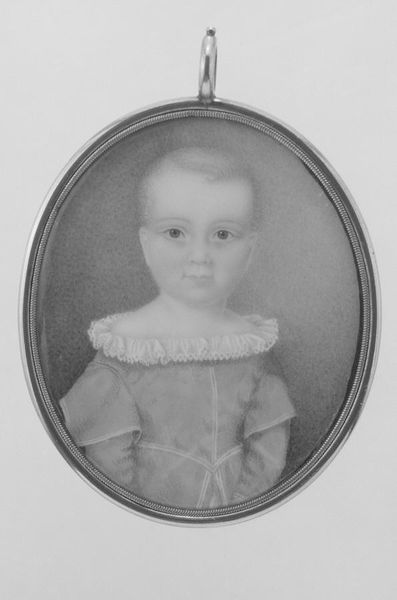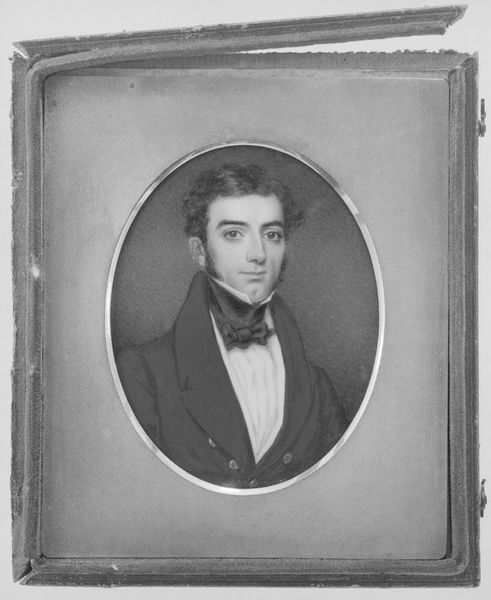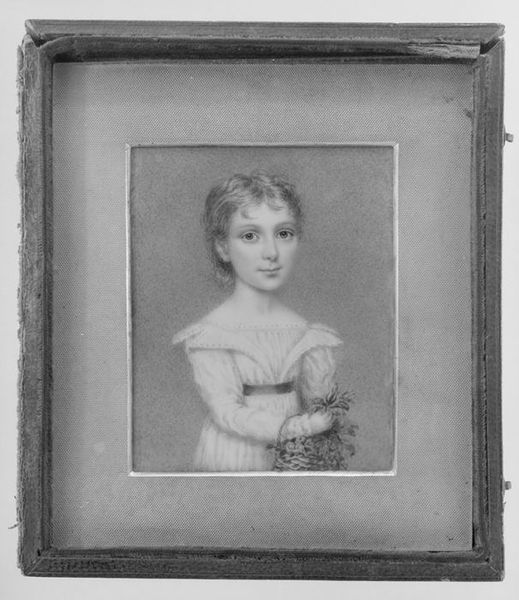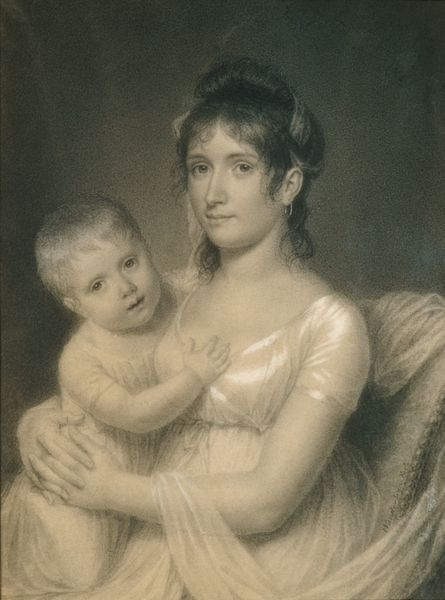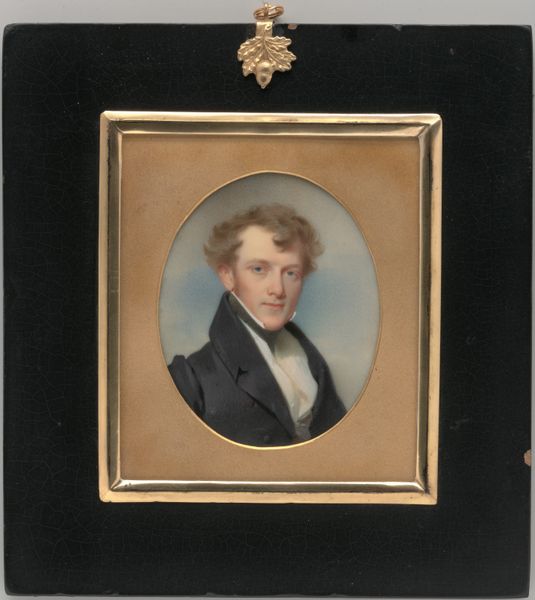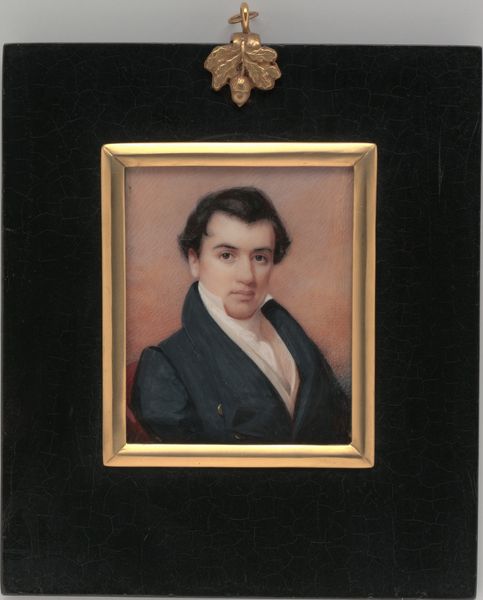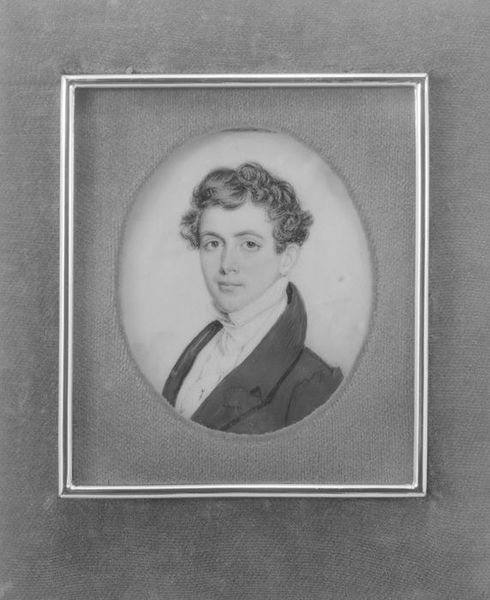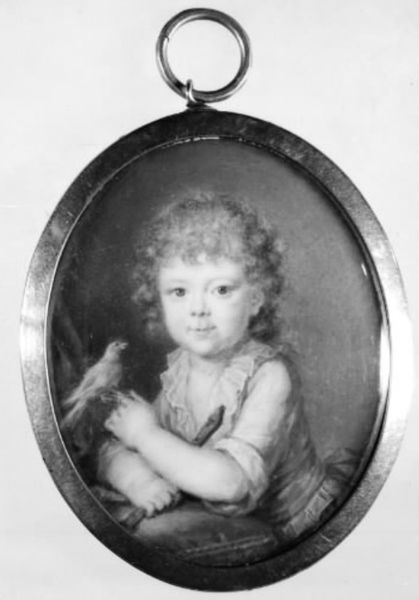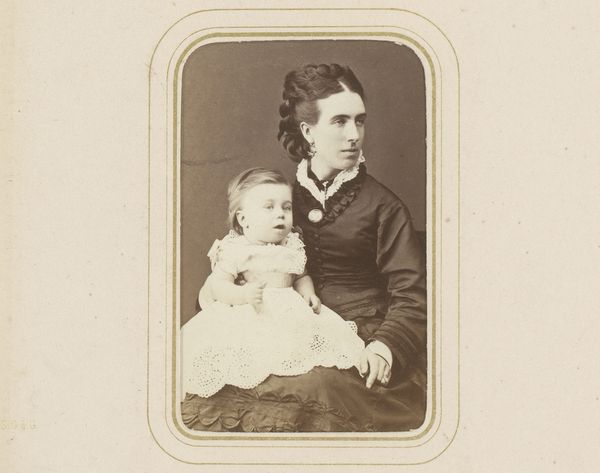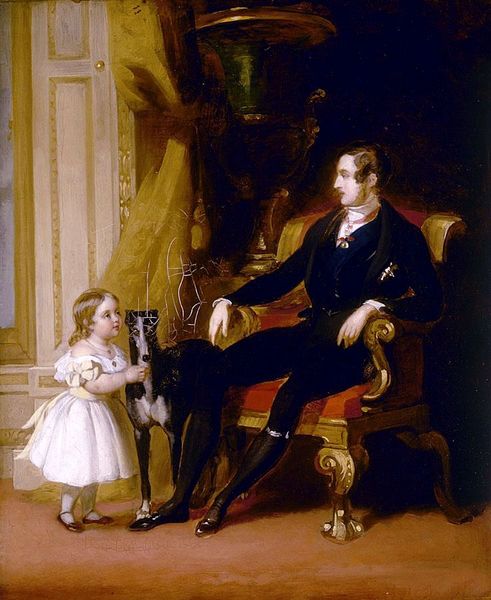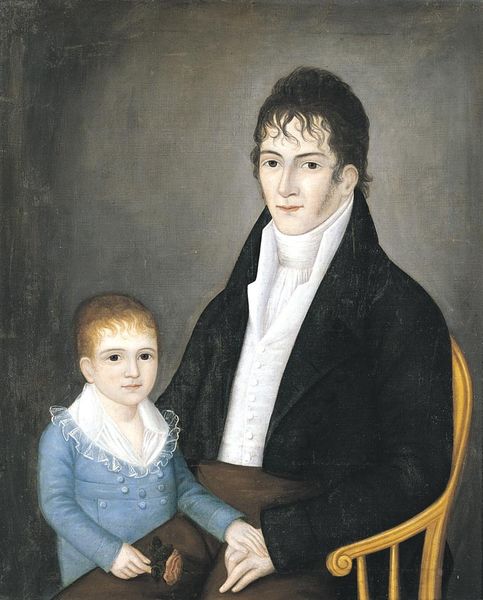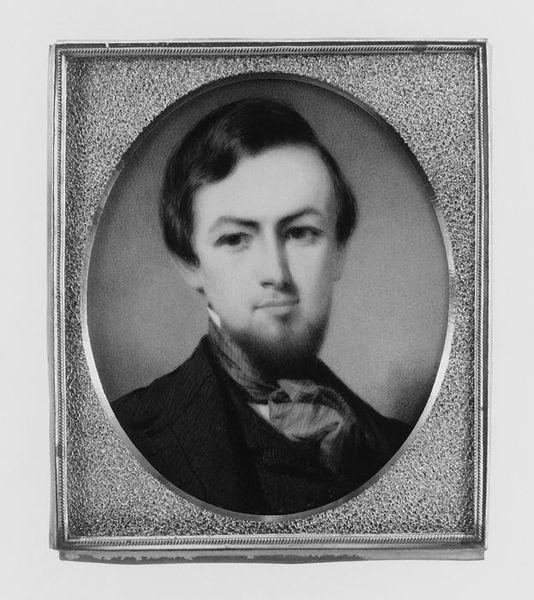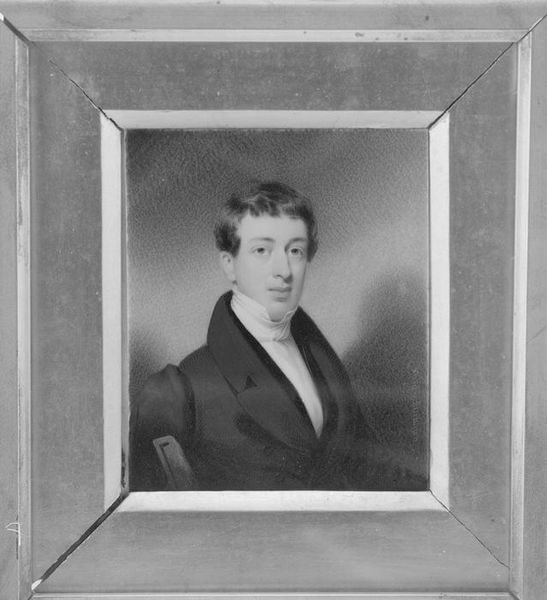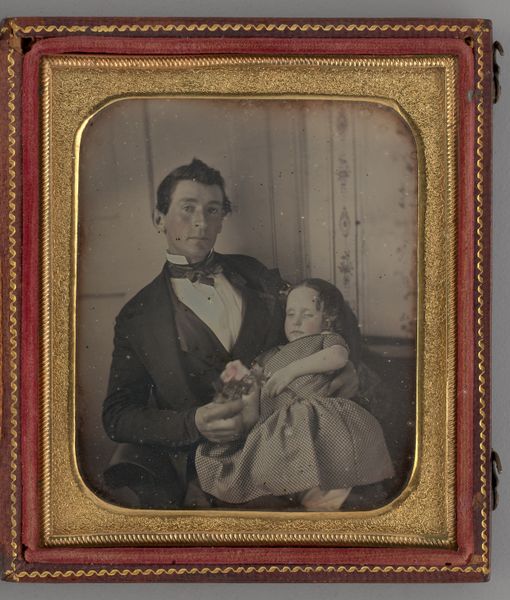
painting
portrait
portrait
painting
figuration
romanticism
miniature
Dimensions: 3 7/8 x 2 7/8 in. (9.8 x 7.3 cm)
Copyright: Public Domain
Nathaniel Rogers painted this miniature portrait of Ferdinand Sands and his Son Joseph, likely in the 1820s in the United States, using watercolor on ivory. These small, intimate portraits were popular among the middle and upper classes as keepsakes and symbols of family identity. Consider the formal and rather stiff poses of the figures. This was a deliberate stylistic choice, meant to convey respectability and status. The dark clothing and serious expressions are typical of the period's emphasis on decorum and moral virtue, values cultivated in the American middle classes through institutions like the church and the family. The act of commissioning a portrait also speaks to the burgeoning art market and the increasing importance of material culture in defining social status. Examining census records, business directories, and family papers can tell us more about the social and economic background of the Sands family and the role this image played in their lives. Art is always embedded in such contexts, and the historian’s task is to bring those contexts to light.
Comments
No comments
Be the first to comment and join the conversation on the ultimate creative platform.
